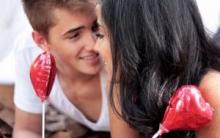Very often, novice photographers are faced with the problem of misunderstanding the special terminology. And very often they stumble upon the aggressive behavior of more experienced fellows, who are often too lazy to explain anything. And, for example, to a simple question: what is bokeh, cannot just answer, but start using complex formulas and incomprehensible to many terms.
But after all, everyone started somewhere. Today we will talk about the term bokeh, which is often used in the speech of photographers around the world. If we move away from exact scientific definitions, then the easiest to understand meaning of the term bokeh can be defined as: artistic blurring of the background in a photograph; an image that is out of focus; the aesthetic quality of the blur. The origin of the term comes from Japanese, where 暈け or ボケ( Bokeh or Bokeh) means - "blurring" or "fog", a possible translation is "blurring" and "fuzziness".
While it's hard to judge, some lenses produce more pleasing out-of-focus backgrounds than others. Good bokeh especially important for portrait lenses, macro lenses, and sometimes telephoto lenses because they tend to use shallow depth of field. The depth of field of the depicted space is often indicated by the word - DOF. Look at the picture below, the aperture value plays a decisive role in whether you get a blurry background or not. In any SLR camera, you can set the aperture value, if you don’t know how to do this, look in the instructions for your camera. By setting the value to f/1.4 for example, you will get a very blurry background, with a clear subject in the foreground. Not everyone will be able to set this value, since this possibility depends directly on your lens. Simply select the lowest value available for your lens.
There are different criteria for determining the quality of bokeh, but still there is a very personal perception. One person may like the bokeh of a photo, and another will say that he does not like such a bokeh pattern at all. The bokeh pattern itself directly depends on the optical design of the lens itself, on the aperture blades. Moreover, it is not at all necessary that the pattern be made of light circles or polygons, bokeh is any blurring of the background.
The price of a lens usually matters, and a good portrait lens is not cheap. As an option - turn your attention to Soviet optics. Today, using a digital SLR camera and old lenses, you can get very cool pictures. The main thing is to choose the right adapter.

Bokeh is the area of the frame that is out of focus. Objects that fall into the blur zone are blurred, making them less recognizable, but sometimes very beautiful. With the help of bokeh in the picture, you can draw whole abstract pictures. Beautiful bokeh is very much appreciated in many genres of photography, and especially in portrait and still life.
In the West, there is even a whole direction of photography - “Low DOF photography”, that is, “photography with a shallow depth of field”. These pictures are what we're talking about today.
NIKON D810 / 85.0 mm f/1.4 SETTINGS: ISO 250, F1.4, 1/80 s, 85.0 mm equiv.
Which lens blurs the background better? Which lens has good bokeh and which has bad bokeh? There is a lot of controversy on the Internet about this. However, in the end it's a matter of taste: some like the blur of one lens, others like the other. It is only important to keep in mind that various models lenses, not only the strength, but also the nature of the blur can vary significantly. In general, when choosing a lens for working with bokeh, you can give a few basic tips.
The bokeh of prime lenses is better than that of zooms.
Typically, lenses with a focal length of 35 to 200 mm are taken to work with bokeh. Wide-angle lenses are rarely used, as they are difficult to get a shallow enough depth of field to create bokeh. Also, wide-angle lenses rarely have nice background blur.
To work with bokeh, use high-aperture optics. Ideally, lenses with aperture greater than 2.8. They will turn out to strongly and beautifully blur the background.
Portrait prime lenses are ideal for these criteria, including fifty dollars: Nikon AF-S 50mm f / 1.4G Nikkor, Nikon AF-S 50mm f / 1.8G Nikkor. This lens is a great choice to try your hand at bokeh on APS-C cameras. In addition, these lenses are not so expensive.
I used a Nikon 85mm f / 1.4D AF Nikkor lens when working with a full-frame Nikon D810 camera. This model is famous for its interesting pattern. However, it is worth noting that the lens is quite old, and its autofocus will only work on cameras that have a “screwdriver” focus drive (from modern devices, it has the Nikon D7100, Nikon D600, Nikon D610, Nikon D750, Nikon D800, Nikon D800E, Nikon D810). However, this lens also has a newer version, in which autofocus will work on any camera. This is Nikon AF-S NIKKOR 85MM F/1.4G. The Nikon AF-S 85mm f / 1.8G Nikkor lenses and the affordable Nikon AF-S 35mm f / 1.8G DX Nikkor lens, specially designed for amateur APS-C DSLRs, will also do a good job of creating beautiful bokeh.


By itself, choosing a good lens will not give you a beautiful shot with great bokeh. Of course, you need to think about the choice of subject, location, lighting and background. I have some practical advice on this score:
Of course, taking pictures with bokeh is on the street. The farther the background is from the subject, the more blurred the background will be. If the subject and the background are close to each other, you are unlikely to get a lot of blur. It is best to place the background from the object at least a few meters away.
It is worth thinking about the choice of shooting time, and hence the lighting. The most expressive light occurs when the sun is low on the horizon, that is, in the morning or evening.
The shots with bokeh will perfectly complement the lights of cars and street lamps. In the blur zone, they will turn into beautiful circles. By the way, on New Year's Eve, it is especially important to include New Year's illumination lights in the frame, with which the center of all major cities is generously decorated.
Do not try to completely blur the background by shooting some small objects from as close as possible. So the background can blur too much, become homogeneous. Pictures look interesting where highlights and objects in the background, being not sharp, do not lose their shape.
It is important to remember that in addition to bokeh, there should be an interesting subject in the frame. It can be a pretty blade of grass, a leaflet, an element of urban infrastructure (a detail of a bridge, a parapet, a mailbox - whatever). A sharp object in the frame will help the viewer not completely lose touch with reality, it will be the center of attention.
A little about shooting options. The most important condition for obtaining a shallow depth of field, and hence bokeh, is an open aperture. Shoot wide open! It is most convenient to control the aperture in the “A” (aperture priority) mode. All other parameters are selected based on the shooting situation.
 NIKON D810 / 85.0 mm f/1.4 SETTINGS: ISO 250, F1.4, 1/125 s, 85.0 mm equiv.
NIKON D810 / 85.0 mm f/1.4 SETTINGS: ISO 250, F1.4, 1/125 s, 85.0 mm equiv.
06/05 11877
Bokeh (from the English bokeh; Japanese 暈け or ボケ - "blur") - the aesthetic effect obtained by an image that is out of focus, i.e. outside the IPIG area.
Bokeh is not in the realm of sharpness control: in-focus objects can have very different blur patterns. Our subjective attitude to such a pattern is called bokeh.
A perfect shooting lens focuses light from a point source into a perfect cone shape. The top of this cone, touching the matrix or film of the camera, creates an image in the form of a point of the smallest size. The size and shape of the dot depends on the quality of the lens. If the light reflected from the lens is not focused on the surface of the matrix, then the image takes the form of a disk. This disk is called a circle of confusion or scattering. Enough big number these circles can create a certain aesthetic effect.
Thus, bokeh occurs at a shallow depth of field. You can adjust the size of the scatter circles. It depends on:
- camera format values;
- focal length of the lens;
- the size of the relative opening of the diaphragm;
- distance from the central object of the photo composition to the background;
- the distance from the camera to the subject being photographed.

Bokeh and its quality.
You can hardly appreciate the quality of the bokeh. Any assessment will be highly subjective. It is not measured in any mathematical units. It is better to talk about the relevance of bokeh in a particular frame. Ito, there may be discussions about this. However, try to make bokeh soft: “dissolve” the background so that it does not interfere with the perception of the main objects of the composition. If your bokeh effect is harsh and distracting from the central subject, it will be difficult to perceive such a frame.
Properly placed bokeh will consist of circles of blur, evenly lit and with fairly clear edges. One such disc can be beautiful in itself. But when the background is blurred so that many hard-edged circles draw attention to themselves, this greatly burdens the composition.

Creating the perfect lens today is almost impossible. Developers only to some extent solve the problems of distortions (aberrations). The level of these distortions affects the shape and illumination of scattering spots. Therefore, real spots have a somewhat blurred edge. Several of these spots differ in brightness depending on their location relative to the center of the photograph.
Bokeh looks beautiful, in which the brightness of blur decreases evenly from the center to the edges. This is a consequence of not fully corrected lens distortion. Thus, a structural defect becomes an artistic merit.

The opposite effect occurs when spherical aberrations are overcorrected. In the picture, this is manifested in the fact that the brightness of the circles of confusion increases from the center to the edges. There is an effect of "ringing" of the photo. For some, this is an abomination. Others are delighted with such a creative phenomenon.
If you shoot with a zoom lens, and even with a large magnification, you can follow the change in the quality of the bokeh. It is affected by focusing distance and focal length. In general, this is normal, as developers are trying to reach a compromise solution.
In any case, you will not be able to create perfect bokeh over the entire range of focal lengths. In addition, lens makers pay more attention to the geometric correctness of spots than to their artistic value. When optimizing the bokeh pattern, they pay attention to the aesthetics of the background, which often distorts the image of the foreground. And there is nothing wrong here. It's just that most photographers and viewers are used to seeing sharp foreground, and the back one is blurry. Therefore, the quality of bokeh is in demand for the background.
Factors affecting the quality of bokeh.
Shape and number of aperture blades.
The arrangement of the aperture as a whole has more influence on the shape of the blur spots than on the very quality of this blur. If you look closely, these spots are not circles at all. Rather, they are polygons with the number of sides equal to the number of aperture blades. Nikon lenses have 7 or 9 aperture blades, Canon - 6, 7, 8, sometimes 9. Thus, blur spots with a six-blade aperture look like hexagons. But the diaphragm with nine petals gives almost perfect circles. Have you noticed that an odd number of aperture blades results in more pleasingly shaped spots?
Modern lenses are most often made with slightly rounded petals. This makes the sides of the polygons bulge, visually bringing them closer to a circle. 9 similar petals make perfectly round bokeh.
If you shoot at a wide open aperture, then the circles of confusion will have an ideal shape in the center of the frame, and become oval or lentil-shaped closer to the edges.
Bokeh and lens design.
The Defocus Control Nikkor are two telephoto portrait lenses (AF DC-Nikkor 105mm f/2D and AF DC-Nikkor 135mm f/2D) that have been manufactured by Nikon since the early 90s. They are equipped with a mechanism that will allow you to directly adjust the bokeh by changing the spherical aberrations. With it, you can adjust the blur of both the background and foreground, as well as at certain aperture values.

Sony (Minolta) 135mm F2.8 T4.5 STF. The lens is different:
- an apodization element with which you can smoothly blur the background;
- manual focus.

Mirror-lens lenses (Rubinar, Reflex-NIKKOR, etc.) allow you to make bokeh for an amateur: in the form of donuts or rings.
Anamorphic attachments and lenses are known to us from the cinema. Make bokeh in the form of vertically elongated ellipses.
Stabilizers.
You can get perfect bokeh if you turn off the optical image stabilizers that new cameras are now equipped with. So it turns out that the stabilization systems for the most part give a certain restless appearance to areas that lie out of focus.
Contrast level
The more contrast the background and the brighter the highlights, the more clearly the circles of confusion are visible and the sharper their edges. The most obvious bokeh is obtained when photographing a city at night or foliage against the backdrop of sunlight.
The color of objects that are out of focus.
There is such a thing as spherochromatism. This is the chromatic difference in spherical aberrations for rays of different wavelengths. This means that the edges of the scattering spots acquire a blurry edging in the background. green color. In the foreground, the same border is obtained, only crimson. You can see this better if you use long focal length lenses wide open. The effect of spherochromatism is such that the bokeh is soft and beautiful when the background in the frame is green. That is why the pictures are successful in this respect in the open air.
At the end of our conversation, let us draw a conclusion. It’s good if you don’t set photographing bokeh as an end in itself. Blurring is more of a secondary effect. Therefore, shooting bokeh for the sake of bokeh itself will quickly get bored. Just remember it as a tool for shallow depth of field shots. Do not create an idol out of him, which allegedly raises your status.
We try for you 24 hours a day and thank you for every repost!
20/06 Categories: Photo tutorials and photo tipsWe take perfect photos on a smartphone using the maximum settings. 11/09 Categories: Photo tutorials and photo tipsEvery photographer who dreams of becoming a true professional should...
YOU WILL ALSO BE INTERESTED

Clients
06/12 1159

Clients
29/11 1218

model question
30/07 4105
Tips for a retoucher: how to lighten or...Acai Berry - How Come Acai Berry Supplement Best You?
Is necessary healthy certified? There are many copycat companies now that are creating products that happen to be low in quality , nor use one of the most beneficial process of extracting the juice around the berries.
Most that are aware of their bodies know about the health benefits of acai berry products.
They are used for centuries in Latin america by ancient medicine men of all ages.
The people in the United states just started using Acai in a newbie couple of years, a new consequence of several endorsements from super stars.
Acai fruit drink is comparable to acai fruit juice except it has less within the fruit.
In order to generally be the product features more filtered water content than juice, and would"ve added ingredients like sugar or corn syrup.
Acai Capsules are a rightly concentrated capsule or pill that is often packed with several vitamins nutrients utilizing the berry itself.
Any of the additional nutrients include Phosphorus, Calcium, Potassium and valuable fatty acids including Omega 6 and Omega 9.
Acai capsules are extremely easy to function into a standard daily work out.
For these reasons include a variety of are a trendy and way relying on Acai in a an acai weight loss program.
The Amazonian fruit is often a strong defense again health concerns that a great many of us have a problem with and can be why its popularity has risen so extremely fast.
Such an issue with inflammation, heart disease and auto immune disorders are helped by the actual pure juice on every day basis.
It can be full of vitamin E among other vitamins that aid regarding look and feel of your skin.
Having more energy can even make a powerful impact located on the way you live your daily.
When you feel sluggish and exhausted at the end on the day, deals with thing get to do is go to the gym or endure a grueling workout normal.
You need energy to burn calories - there is no way around it.
An acai berry supplement is a jolt to your energy level - and a safe and secure one overly.
You won't have to put together with the jitters that other weight supplement losss cause that help you make feel appreciate your heart is just about to explode.
ORAC (oxygen Radical Absorbance Capacity) score of mangosteen is 167.
It's efficacy in relation to anti oxidants can be gauged throughout the fact that blue berry's ORAC score is 32 and which Apple is 14.
If there isn't the luxury of working out all day, every day, you desire to focus on what's happening inside yourself to get you the results you want.
The best place to start is to increase your metabolism as much as possible.
The process of metabolism burns away body fat you have in your body.
When you have time consuming consumption, the fat that physical structure takes was usually saved and builds up, giving you the kilos that lowering the rather canrrrt you create. http://blogsdes.top/derminax/
The most delicious exotic fruit - mangosteen, has become a real discovery in nutrition!
It contains a RECORD amount of nutrients that stimulate active fat burning and reduce weight!
Mangosteen syrup will melt up to 10 kg of fat in 2 weeks!
Save yourself from obesity and reduce the risk of heart attack, diabetes and hypertension by 89%.
Р 'РѕРґРѕРѕРјРј РїР »РѕРґРμ РєСѓР ° РѕС,РѕРѕРѕРІ СѓРѕРґРμѐжииџџ РїРѕС ‡ С,Рё РІ 40 СђР ° Р · Р ± РѕР» СњС € Рμ, С ‡ РμРј РІРѕ РіР СђРѕСѓР »РѕРј СђР ° СѓС РμРμРѕ СђР °Р»РѕСЌ. Теперь принимаю Mangosteen. Р РѕР ° Сћ, С ‡ С,РѕРѕРїРμСђР ° С,РёрРѕРѕ РїРѕРјРѕР¶РμС ,, РїРѕС,РѕРјСѓ, С ‡ С,Рѕ СќС СѓРμРμРѕСџ СѓР¶Рμ РіС,РѕСђС <Рμ СђРѕРґС <. Рј Мангosteen slim РїСђРѕРѕРѕРѕРѕРѕРєР ° Р · Р ° РѕРёСџ РѕРμ РіС <Сџрір »РμРѕС <, РїРѕС,С,РѕРјСѓ РёСѓРїРѕР» СњР · РѕРІР ° С Сњ РїСђРμРїР ° СрР ° С РјРѕРѕСѓС РІСѓРμ! P' S€RєRѕR»Pµ S‚PµSЂRїRµP»P° PSR°PїR°RґRєRe RјR°R»SЊS‡РёС€РµRє, PICЃРµ RјRµРЅСЏ считаR»Рё толсс№. P RјRμRЅRЅRѕ RїRѕSЌS,RѕRјSѓ RμR¶RμRіRѕRґRЅRѕ C "F ° C ° SЂRјR RμRІS,RoS † ‡ RμSЃRєRoRμ RїSЂRμRґRїSЂRoSЏS,RoSЏ SЃRѕR · RґR ° SЋS, RІSЃRμ RЅRѕRІS Go to website: http://mangjoo77.mangoosteen.com/ Bokeh is one of the concepts in photography that is discussed by both amateurs and professionals. Too often people think they really know what it means when someone says they love special bokeh shots. If you are just starting to explore the world of photography, then you no longer need to get into the dictionary and look for the definition of this word. The article will be a brief guide to the bokeh effect for you. 1. Like "do, re, mi ..." when studying musical notation, let's start with understanding the basics. And, above all, from the very word "bokeh" (bokeh - English). It doesn't look like English and almost doesn't sound like English. It would be forgivable if you thought that this was another newfangled idea that swept the nation, something like an unusual skin condition, or if you took this word for the name of one of the transformers. 2. Initially, this word is of Japanese origin and literally means "blur", "fuzziness". Japanese does not have an "h" at the end of a word and seems to be borrowed from English for a more correct pronunciation. If you say "bokey" you'll get pretty close to the original pronunciation. 3. Probably, you have already guessed that the essence of this technique lies in the focus. So it is, however, it is somewhat more than just a trick. The question of who introduced this photographic term into English language, is hotly debated, but the harbinger was Mike Johnson, who once ran Photo Techniques magazine. 4. The photographic community has been using the term "bokeh" since the mid-nineties. In print, this word with “h” at the end appeared at the beginning of our century. Don't think you've always known him. This is a fairly new definition. Although, how great it would be if Shakespeare came up with it: “The quality of mercy is not bokeh”. 5. One of the main differences between photography and other forms of art, say, painting, is the choice of focus. When we humans look at the world, our eyes focus on objects in front of us, whether they are near or far. Previously, most artists depicted reality in this way. Even if the person or object in the foreground of the picture is painted in detail and in clear colors, then less significant objects, as a rule, were written out so that they could be seen. 6. But if you purposefully look at one object in front of you, then the less significant details of the background blur. There are camera lenses that can blur objects in the foreground, middle, or background of a photo. Various lenses in various cameras open up many technical possibilities. 7. Cameras with large apertures are especially adept at creating bokeh. Those with a small aperture usually just soften the background of the photo. 8. Beautiful bokeh in photography is achieved by increasing the aperture value (F-number). "F" means "focal". The focal length is determined by the ability of the optical system to collect rays into one point or scatter them. In other words, focus or defocus the image. 9. The aperture value is the ratio of the diameter of the lens inlet to its focal length. The larger the diameter of the inlet, the more blurred the background will be. 10. However, bokeh is not only science and mechanics, it is also aesthetics. Reception is determined not so much by how blurred the background (or even the foreground) is by how good the overall blur effect is. When evaluating bokeh, be sure to notice how pleasing to the eye is blur. 11. The bokeh effect can greatly improve the quality of a photo. This is due to the fact that the subject becomes more visible and forces the viewer to focus on one part of the picture - on the one that the photographer wants to show us. 12. This technique is especially useful for lovers of macro photography - it allows you to emphasize the features of a tiny object. What are the blurry shapes behind the giant dead dandelion? Of course, the tree in the field. Bokeh makes an image more attractive because so much is at the center of our attention. 13. Due to the ability to focus our attention on the desired object more effectively than other means, bokeh can be called a kind of optical illusion. Some might say that this applies to almost every technique in photography, from using tilt and shift lenses to the use of light and shade. Confused? 14. Well, you are on the right track, because the whole point is the so-called spot (circle) of scattering. The stray spot is the cone of light that radiates from the lens when a photograph is taken, when the image is out of focus but still has an acceptable level of clarity. 15. Most aperture holes are polygonal, which is why when you see bokeh, the shapes of diffuse spots in the picture tend to have similar shapes to these holes. However, if you set the maximum aperture size, then the bokeh should be in the form of circles. 16. The lens plays an important role in creating the bokeh effect. Blur discs can glow evenly, or alternatively, brighter along the radius or in the center. It all depends on the spherical aberration of the lens. Aberration is an effect that occurs when the refraction of light through a lens is increased. 17. In "normal" photos this will be an aberration, but when creating a bokeh effect, everything depends on the photographer. In other words, the photographer can change the camera settings if spherical aberrations are bad for achieving the desired effect. 18. Of course, the bokeh effect is always studied for its own sake. 19. Some argue about whether one more Japanese word should add to the English lexicon. The word is "pinto" which means "in focus". Indeed, everything in the photo is out of focus - that is, bokeh. However, this is debatable. 20. Ultimately, bokeh is subjective. It depends entirely on how you think the overall composition gained or lost from applying this effect. Summing up, let's say that everyone decides what can be removed in the photo in the background, and what could be focused on. Whether you like bokeh or not is always and completely up to you. The term "bokeh" refers to the out-of-focus area of a photograph, usually created by sources of light and color behind the subject. This handy tip will teach you step by step how to create beautiful bokeh using Christmas tree lights. This is especially useful if you want to get nice bokeh in the background but find yourself in a room with no light sources to create nice bokeh. Adding beautiful bokeh can create a very interesting and eye-catching effect for your photos. Bokeh is essentially a zone of blur. Many people understand it as an out-of-focus area of a photo that can be enhanced with lights and colors behind the subject. I'm a big fan of creative bokeh in photography, but due to my busy schedule, I had to shoot a lot of photos in the evening at home. It turned out that shooting in such an environment is very limited, which forced me to use other resources that you usually do not use in daytime or outdoor photography. This handy tip will walk you through the step-by-step process of creating your own beautiful bokeh with Christmas tree lights at home. This effect is especially useful when shooting small inanimate objects, people and pets. Set up your camera as you normally would for indoor shots, but set your aperture to its widest setting, preferably f/1.8 or f/1.4 (depending on your lens). For this tutorial, I'll be using a Nikkor 50mm f/1.8. If the house is light enough, you should not use a flash. Try setting the flash away from the camera, aiming at the subject. If the area you plan to place the lights in has reflective surfaces, you can also aim the flash at the background so that the reflection of the light from those surfaces also takes part in the bokeh. If you don't have a flash and the lighting is poor, you should mount your camera on a tripod and use a slower shutter speed. For this tutorial, I'll be using a Nikon SB 600 with a diffuser mounted to the right of the camera. Attach the Christmas tree garland. Try to space the bulbs evenly over the background you plan to shoot, or place them in a specific order. If you can't find a way to fix the lamps, you can use bookshelf and stationery clips to secure the lights to the shelf. The garlands I used for this tutorial automatically change color from white to blue. Set up your subject. I find that the bokeh is better if I place my subject about a meter and a half in front of the lights. The farther you place the subject from the background lights, the better. The first image shows bokeh from a garland 1.5 meters away from the subject, and the second image shows bokeh from a garland 0.5 meters away from the subject. Of course, if you prefer your bokeh to be smaller, that's up to you. I'm talking about my preferences. If you are not using a fixed focal length lens, zoom the lens to the maximum. This shot was taken using a Nikon 55-200mm at 95mm (which is the maximum I could use in this room). Although the aperture was f/4.5, I was able to achieve better bokeh than if I hadn't zoomed in at all.
Published: September 16, 2011 at 07:34 


















What is bokeh?
What will you need


Step 1

Step 2 (Optional)

Step 3

Step 4


Step 5










What to do with a girl on a first date?
Grams or grams - which is correct?
How to solve motion problems IV
Winter landscapes of outstanding artists How to draw a light landscape in winter with a pencil for beginners
Solving logarithmic and exponential inequalities by the rationalization method